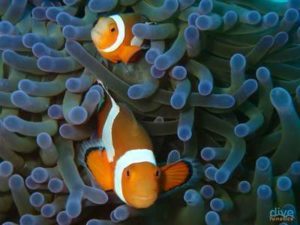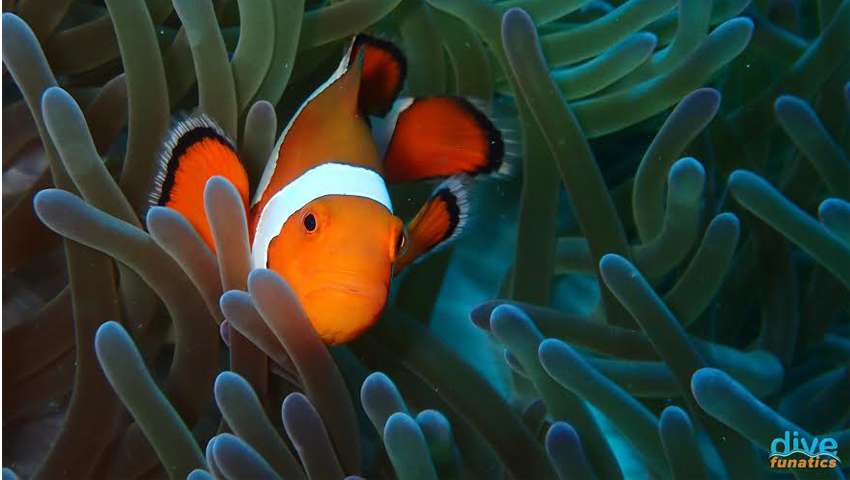Learning underwater photography is a rewarding skill, that can turn easily into a hobby, and may even give considerable returns on investment for the few gifted ones in the process.

Clown fish Looking the otherway – by Kae of Dive Funatics
But unlike top-side photography, underwater world is more challenging to conquer and master simply because most subjects are not stationary, water columns are moving, and the photographers are using bulky and specialized equipment like scuba gear, camera housing, strobes with extended arms, and other considerations.
Due to the emergence of sophisticated digital point and shoot cameras, availability of cheaper underwater housing, and the growing popularity of social networking sites, so does the rise in newly certified divers itching to take their compact cameras with them underwater. Now Houston, we have a problem!
In the real world, divers newly certified, just freshly out of their Open Water Courses do not have good enough buoyancy, stable enough to take underwater shoots without damaging any sensitive marine life or sensitive bottom! Most of them hang-on and grab whatever they can just so they are stable enough to capture those to-die-for shots! At this point, all repetitive briefings about not touching corals, being responsible divers, about respecting the life and its habitat gets thrown out the window. Nothing exists but that moment, and that desire to take something “instragramable”!

Playful anemone fish by Kae of Dive Funatics
As a diver, as a photography hobbyist, I understand that getting the right foundation in everything that I do in pursuit of my craft is everything to be better and successful than the rest. As a dive professional who spends the last decade enticing people to take up scuba diving, educating divers to be responsible underwater, and taking steps to actually practice what I teach, I can’t help but frown upon those who disrespect scuba diving as a sport, photography as a hobby, and leave trails of destruction along the way.
You don’t have to be like me. All I am suggesting is try and make less negative impact when you dive. This is the least that you can do as a diver.
So what do bad divers do when taking photos? Watch this short clip captured by the good guys at Wet Monkeys.
How would you feel if someone walks into your property, takes a picture of what they want to shoot at, with no regard for how they wish to accomplish what they set out to do? How do you think this turtle feel at this moment? What about those tiny, sensitive life at the bottom?
Do not be part of the problem, be a better diver first before you think of getting into something beyond your head. You may be an accomplished photographer but unless you can hover properly, and more importantly, having the mindset to be responsible, develop heightened situational awareness, and becoming respectful, sensitive and responsible diver – do not take up underwater photography yet!
Develop good skills and habits. If you need help, invest in lessons, find a mentor, dive more. We at Dive Funatics can ease the transition, choose our flexible and reasonably priced Underwater Photography Packages.
Please watch the video carefully crafted by PADI to emphasize how great diving in the Philippines really is.
Photos of anemone fish are choosen in this article as they are commonly used as starter subjects for underwater photographers.


Recent Comments